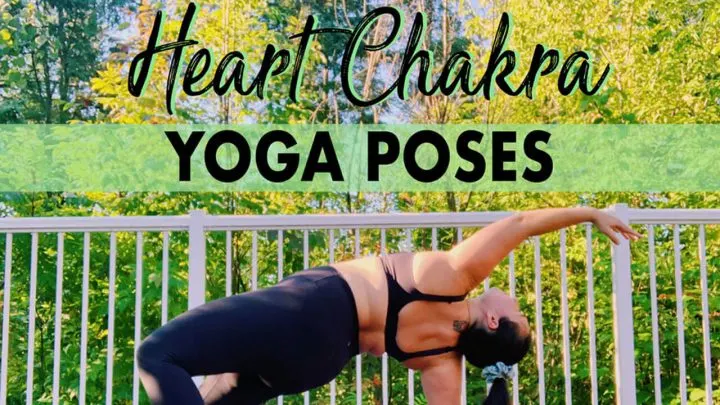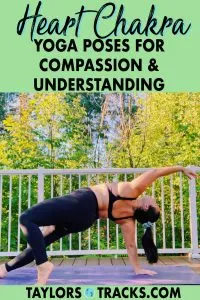The heart chakra is, you guessed it, all about love. This includes love for yourself as well as for others. When your heart chakra is balanced you can feel a deep sense of love, compassion, kindness and even spirituality.
But when this chakra is unbalanced it can spark feelings of unworthiness, fear, being indecisive and can even cause physical manifestations of disease, such as heart disease.
Luckily you won’t find a shortage of yoga to open the heart chakra and you’re definitely already doing some in your practice!
Most people tend to hunch over, whether it’s from driving, working at a desk, lack of confidence or any combination, your heart chakra is typically collapsed and these yoga poses to open your heart will help you to feel more love, compassion and understanding.
This chakra is also the middle chakra, the connection between the lower, physical chakras and the upper, spiritual chakras, so it’s a great one to get balanced before continuing your spiritual journey.
Heart Chakra Basics
Location: Centre of your chest, between your breastbone and spine
Element: Air
Colour: Green
Meaning: The heart chakra governs your love, compassion and understanding for yourself and for others. Emotions related to this chakra are attachment, rejection and fear.
Other names: Fourth chakra, Anahata chakra
Translation: Unhurt
How Does Yoga Help Balance the Heart Chakra?
As with all chakras, yoga has many poses that help to open each chakra but with opening the heart chakra many of the poses also open others at the same time.
Since most people collapse their chest on an average day, opening your heart chakra through yoga actually helps to do the opposite, to allow your chest to expand. This can seem uncomfortable or unnatural at first but it will do wonders for the emotions attached to the Anahata chakra.
Yoga for Heart Chakra Sequence
Try adding some of these poses to your yoga practice and feel the difference in your heart chakra! These poses, especially the deep backbends like wheel should only be performed after adequately warming up.
Prefer something a little more zen? Then try my heart chakra yin yoga practice!
Heart Chakra Poses for Developing Deeper Compassion for Yourself
These heart-opening yoga postures can be added into a yoga sequence easily to create more space in your chest and heart chakra.
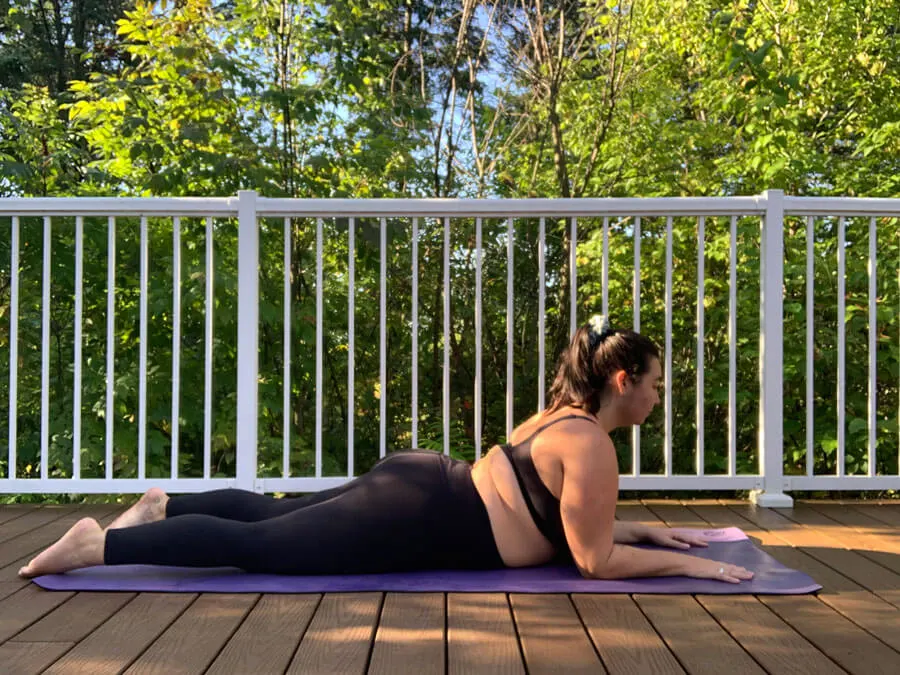
Sphinx Pose (Salamba Bhujangasana)
Come to lay face down on your mat. Bring your elbows under your shoulders, your forearms pointing towards the top of your mat. Spread your fingers wide. Shine your chest forward, the crown of your head reaches up.
Give your hips a little wiggle if your lower back feels tight to help loosen it up. Push into your forearms and hands so that so your shoulders move away from your ears while also pulling back which allows your chest to open. Close your eyes and allow your heels to relax, perhaps rolling to the sides of your mat. Your feet can be hip distance, mat distance or whatever distance feels good on your lower back. Take 5 deep breaths.
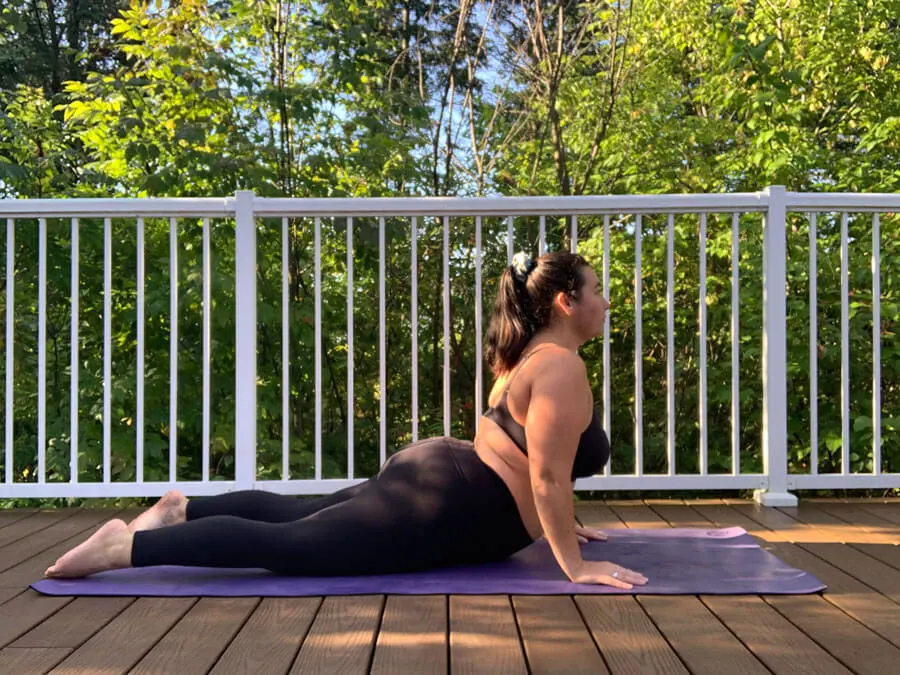
Cobra Pose (Bhujangasana)
From plank pose, lower your body onto the ground, keeping your elbows tucked by your sides and untucking your toes. Push into the tops of your feet and engage your thighs so much so that your knees lift off the ground, keeping your glutes relaxed. Inhale to lengthen your spine and reach the crown of your head towards the front of your mat.
Push firmly into your palms, engage your back and shine your chest forward as you peel if off of the ground. Keep your hips grounded, have a micro bend in your elbows and pull your shoulders blades down your back, away from your ears. Hold for 2-3 breaths, or however long feels good.
Exhale, lower your chest towards the ground with control. Repeat as many times as needed.
Variations: For a less intense backend that is still an equally good heart opener, follow the steps above but instead of curling your spine so you’re looking straight ahead, opt to lift your shoulders and chest as far up as feels comfortable. Use your back muscles, you know you’re doing this if you can lift your hands off the mat. Very little weight should be in your hands for low cobra. Keep your neck neutral, in line with your spine. This is typically looking just past the top of your mat.
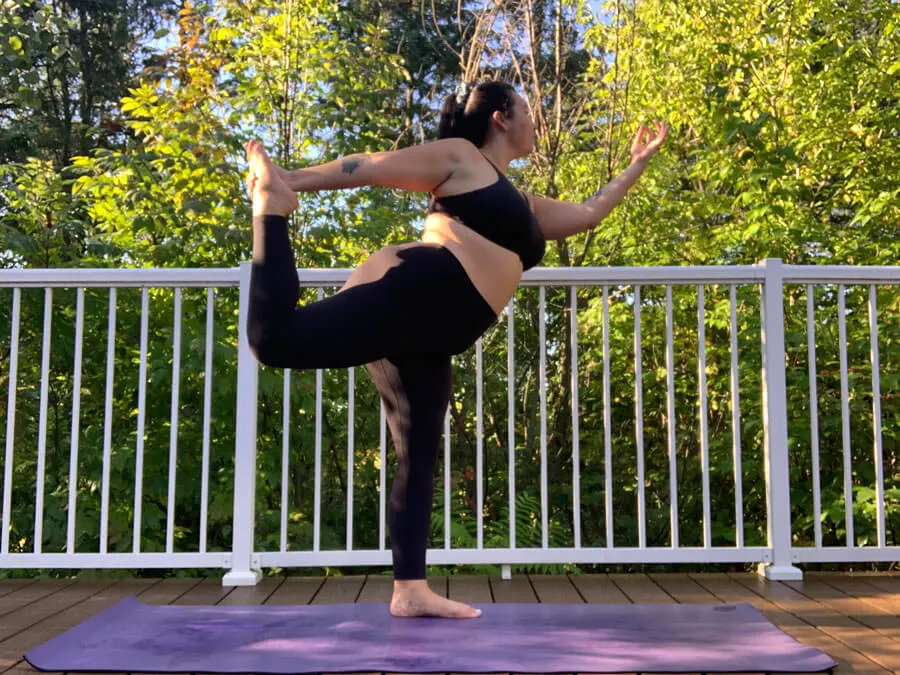
Dancer’s Pose (Natarajasana)
Stand at the top of your mat with your arms relaxed at your sides. Inhale, reach both arms up, exhale, allow your right arm to fall to your right-hand side. Inhale, ground your left foot into your mat, exhale, bend your right knee and catch your right foot in your right hand, grabbing the inner foot, your arch.
Take a deep inhale to square your hips towards the front and keep a micro bend in your left knee. On your exhale begin to push your right foot into your right hand, keeping your body upright. Continue to pull your right hip forward to feel the stretch in your hip flexor. Only when you can kick no further into your hand begin to lean forward.
Keep your drishti (where your gaze is focused) on one spot, looking ahead, avoiding the floor. Push into your left big toe to keep your left leg steady. Option to touch your left thumb to your index finger into the gyan mudra which is said to help balance and concentration.
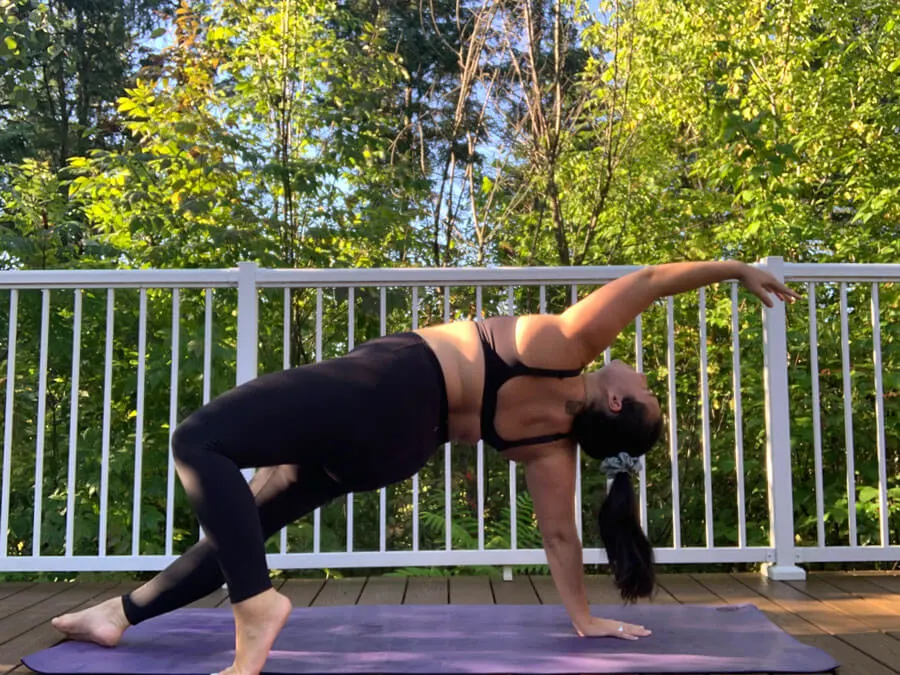
Wild Thing Pose (Camatkarasana)
From downward dog, reach your right foot to the sky, into three-legged dog. Keep your hips square as you float your shoulders over your wrists. Bend your right knee as you lift your right hand off your mat, allowing your right foot to land to the left of your mat, stepping off of your mat, flipping your body so that it’s facing up.
Push off of your right toes and ground into your left foot and hand. Push your hips towards the sky, arch your back into a backbend and reach your right at towards the top of your mat, allow your head to look towards the top of your mat upside down.
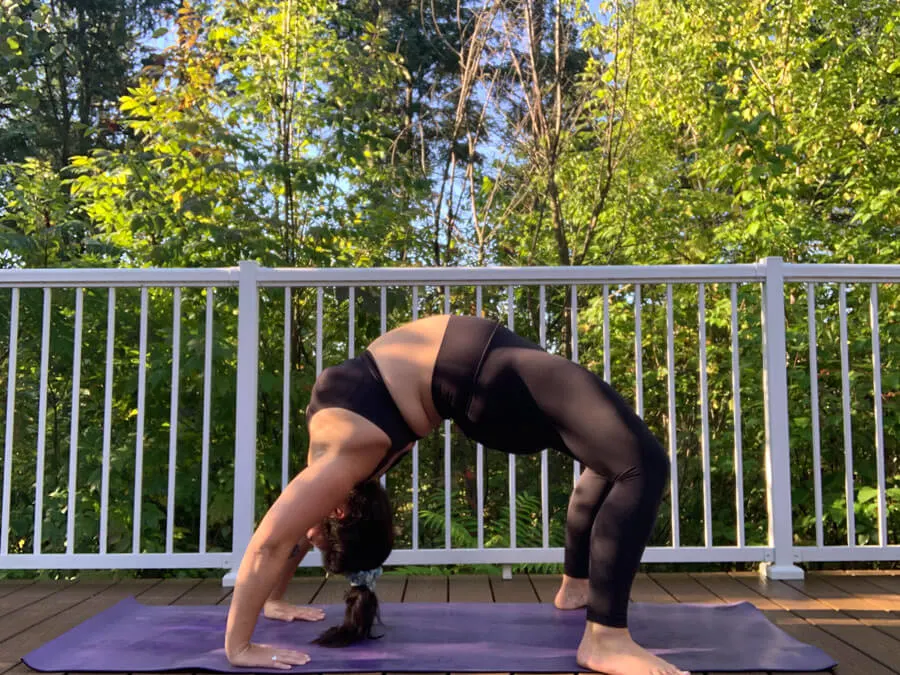
Wheel (Urdhva Dhanurasana)
Start laying down on your back. Bring your feet so that they are hip-width apart, flat on the floor. Reach your hands over your shoulders and place them on the mat, fingers pointing towards the bottom of your mat. Engage your core by pulling your belly button to your spine.
Push evenly into your hands and feet and lift your hips up. Continue to engage your glutes and keep your hips stable while pressing your chest towards your hands for a deep heart opener. Aim to bring your shoulders above your wrists. Internally rotate your thighs for stability. Keep your glutes and core engaged, always.
Note: This is quite a big heart opener. Options for heart openers that aren’t quite as intense but are still great are bow, camel or bridge.

